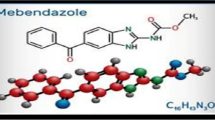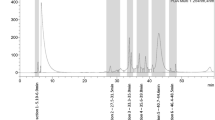Abstract
(OFI) contains health-promoting compounds like flavonoids, being the isorhamnetin glycosides the most abundant. We evaluated the effect of OFI extracts with different isorhamnetin glycosides against two different human colon cancer cells (HT-29 and Caco2). The extracts were obtained by alkaline hydrolysis with NaOH at 40 °C during 15, 30 or 60 min. Tri and diglycosides were the most abundant isorhamnetin glycosides, therefore these compounds were isolated to compare their cytotoxic effect with the obtained from the extracts. The OFI extracts and purified isorhamnetin glycosides were more cytotoxic against HT-29 cells than Caco2 cells. OFI-30 exhibited the lowest IC50 value against HT-29 (4.9 ± 0.5 μg/mL) and against Caco2 (8.2 ± 0.3 μg/mL). Isorhamnetin diglycosides IG5 and IG6 were more cytotoxic than pure isorhamnetin aglycone or triglycosides when they were tested in HT-29 cells. Bioluminescent analysis revealed increased activity of caspase 3/7 in OFI extracts-treated cells, particularly for the extract with the highest concentration of isorhamnetin triglycosides. Flow cytometry analysis confirmed that OFI extract and isorhamnetin glycosides induced a higher percentage of apoptosis in HT-29 than in Caco2, while isorhamnetin was more apoptotic in Caco2. This research demonstrated that glycosilation affected antiproliferative effect of pure isorhamnetin glycosides or when they are mixed with other phytochemicals in an extract obtained from OFI.



Similar content being viewed by others
Abbreviations
- IC50 :
-
Half maximal inhibitory concentration
- OFI:
-
Opuntia ficus-indica
- IGs:
-
Isorhamnetin glycosides
References
Fernández-López JA, Almela L, Obón JM, Castellar R (2010) Determination of antioxidant constituents in cactus pear fruits. Plant Foods Hum Nutr 65:253–259. doi:10.1007/s11130-010-0189-x
Ginestra G, Parker M, Bennett R, Robertson J, Mandalari G, Narbad A, Lo Curto R, Bisignano G, Faulds C, Waldron K (2009) Anatomical, chemical, and biochemical characterization of cladodes from prickly pear [Opuntia ficus-indica (L.) Mill.]. J Agric Food Chem 57:10323–10330. doi:10.1021/jf9022096
Santos-Zea L, Gutiérrez-Uribe J, Serna-Saldivar SO (2011) Comparative analyses of total phenols, antioxidant activity, and flavonol glycoside profile of cladode flours from different varieties of Opuntia spp. J Agric Food Chem 59:7054–7061. doi:10.1021/jf200944y
Serra AT, Poejo J, Matias AA, Bronze MR, Duarte CM (2013) Evaluation of Opuntia spp. derived products as antiproliferative agents in human colon cancer cell line (HT29). Food Res Int 54:892–901. doi:10.1016/j.foodres.2013.08.043
Loizzo MR, Said A, Tundis R, Hawas UW, Rashed K, Menichini F, Frega NG, Menichini F (2009) Antioxidant and antiproliferative activity of Diospyros lotus L. extract and isolated compounds. Plant Foods Hum Nutr 64:264–270. doi:10.1007/s11130-009-0133-0
Yen CT, Hsieh PW, Hwang TL, Lan YH, Chang FR, Wu YC (2009) Flavonol glycosides from Muehlenbeckia platyclada and their anti-inflammatory activity. Chem Pharm Bull 57:280–282. doi:10.1248/cpb.57.280
Shen SC, Chen YC, Hsu FL, Lee WR (2003) Differential apoptosis‐inducing effect of quercetin and its glycosides in human promyeloleukemic HL‐60 cells by alternative activation of the caspase 3 cascade. J Cell Biochem 89:1044–1055. doi:10.1002/jcb.10559
Hung TM, Cuong TD, Dang NH, Zhu S, Long PQ, Komatsu K, Min BS (2011) Flavonoid glycosides from Chromolaena odorata leaves and their in vitro cytotoxic activity. Chem Pharm Bull 59:129–131. doi:10.1248/cpb.59.129
Hibasami H, Mitani A, Katsuzaki H, Imai K, Yoshioka K, Komiya T (2005) Isolation of five types of flavonol from seabuckthorn (Hippophae rhamnoides) and induction of apoptosis by some of the flavonols in human promyelotic leukemia HL-60 cells. Int J Mol Med 15:805–809. doi:10.3892/ijmm.15.5.805
Hadj Salem J, Chevalot I, Harscoat-Schiavo C, Paris C, Fick M, Humeau C (2011) Biological activities of flavonoids from Nitraria retusa (Forssk.) Asch. and their acylated derivatives. Food Chem 124:486–494. doi:10.1016/j.foodchem.2010.06.059
Kuntz S, Wenzel U, Daniel H (1999) Comparative analysis of the effects of flavonoids on proliferation, cytotoxicity, and apoptosis in human colon cancer cell lines. Eur J Nutr 38:133–142. doi:10.1007/s003940050054
Agullo G, Gamet L, Besson C, Demigné C, Rémésy C (1994) Quercetin exerts a preferential cytotoxic effect on active dividing colon carcinoma HT-29 and Caco2 cells. Cancer Lett 87:55–63. doi:10.1016/0304-3835(94)90409-X
Boubaker J, Bhouri W, Ben Sghaier M, Ghedira K, Dijoux Franca MG, Chekir‐Ghedira L (2011) Ethyl acetate extract and its major constituent, isorhamnetin 3‐O‐rutinoside, from Nitraria retusa leaves, promote apoptosis of human myelogenous erythroleukaemia cells. Cell Prolif 44:453–461. doi:10.1111/j.1365-2184.2011.00772.x
Jaramillo S, Lopez S, Varela LM, Rodriguez-Arcos R, Jimenez A, Abia R, Guillen R, Muriana FJG (2010) The flavonol isorhamnetin exhibits cytotoxic effects on human colon cancer cells. J Agric Food Chem 58:10869–10875. doi:10.1021/jf102669p
Kuo SM (1996) Antiproliferative potency of structurally distinct dietary flavonoids on human colon cancer cells. Cancer Lett 110:41–48. doi:10.1016/S0304-3835(96)04458-8
Lee HJ, Lee HJ, Lee EO, Ko SG, Bae HS, Kim CH, Ahn KS, Lu J, Kim SH (2008) Mitochondria-cytochrome C-caspase-9 cascade mediates isorhamnetin-induced apoptosis. Cancer Lett 270:342–353. doi:10.1016/j.canlet.2008.05.040
Matsuo M, Sasaki N, Saga K, Kaneko T (2005) Cytotoxicity of flavonoids toward cultured normal human cells. Biol Pharm Bull 28:253–259. doi:10.1248/bpb.28.253
Londoño-Londoño J, Lima VRD, Jaramillo C, Creczynski-pasa T (2010) Hesperidin and hesperetin membrane interaction: understanding the role of 7-O-glycoside moiety in flavonoids. Arch Biochem Biophys 499:6–16. doi:10.1016/j.abb.2010.04.023
Yao LH, Jiang YM, Shi J, Tomas-Barberan FA, Datta N, Singanusong R, Chen SS (2004) Flavonoids in food and their health benefits. Plant Foods Hum Nutr 59:113–122
Moon SS, Rahman AA, Manir M, Ahamed VJ (2010) Kaempferol glycosides and cardenolide glycosides, cytotoxic constituents from the seeds of Draba nemorosa (Brassicaceae). Arch Pharm Res 33:1169–1173. doi:10.1007/s12272-010-0806-0
Tofighi Z, Asgharian P, Goodarzi S, Hadjiakhoondi A, Ostad SN, Yassa N (2014) Potent cytotoxic flavonoids from Iranian Securigera securidaca. Med Chem Res 23:1718–1724. doi:10.1007/s00044-013-0773-3
Jänicke RU, Sprengart ML, Wati MR, Porter AG (1998) Caspase-3 is required for DNA fragmentation and morphological changes associated with apoptosis. J Biol Chem 273:9357–9360. doi:10.1074/jbc.273.16.9357
Acknowledgments
Authors acknowledge the financial support from the Consejo Nacional de Ciencia y Tecnología (CONACYT-CB Research Project 1168708 and Scholarship Program) and the Tecnológico de Monterrey (Research Chair Funds CAT-151). Also, we acknowledge the donation of Opuntia ficus-indica flour by Alimentos Funcionales S. de R.L. M.I.
Conflict of Interest
The authors declare that they have no conflict of interest.
Author information
Authors and Affiliations
Corresponding author
Rights and permissions
About this article
Cite this article
Antunes-Ricardo, M., Moreno-García, B.E., Gutiérrez-Uribe, J.A. et al. Induction of Apoptosis in Colon Cancer Cells Treated with Isorhamnetin Glycosides from Opuntia Ficus-indica Pads. Plant Foods Hum Nutr 69, 331–336 (2014). https://doi.org/10.1007/s11130-014-0438-5
Published:
Issue Date:
DOI: https://doi.org/10.1007/s11130-014-0438-5




